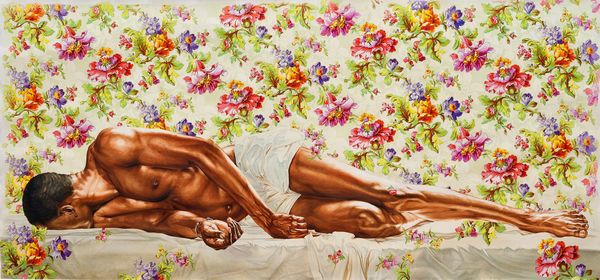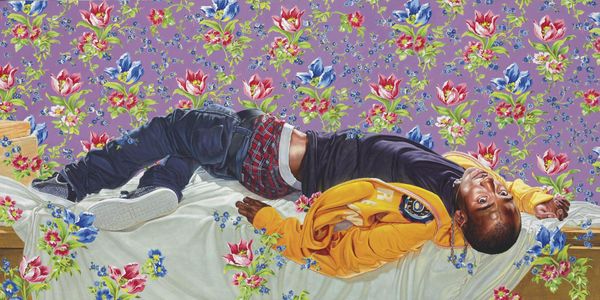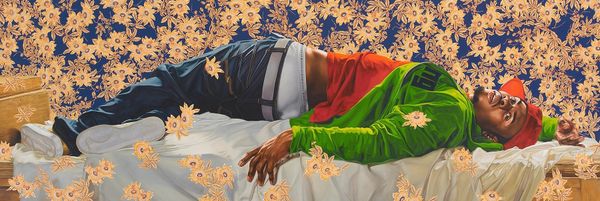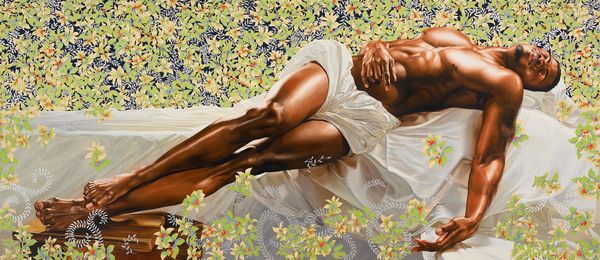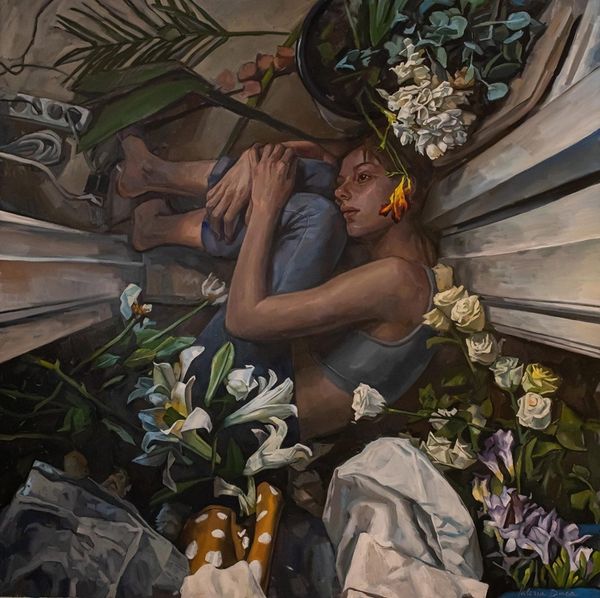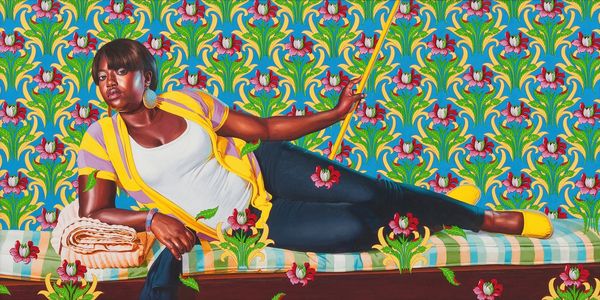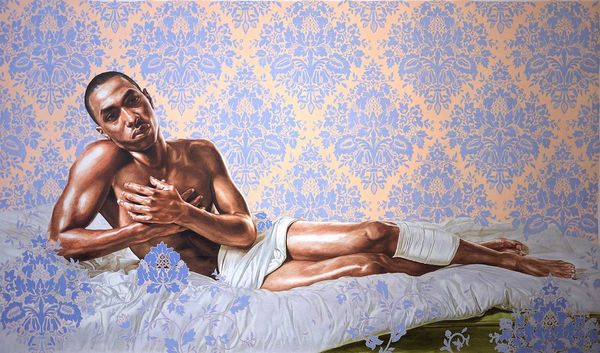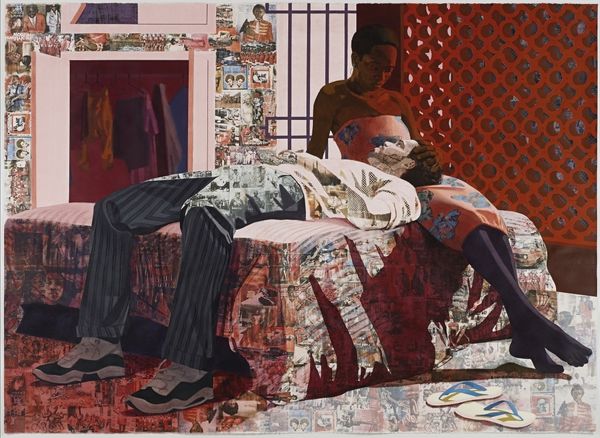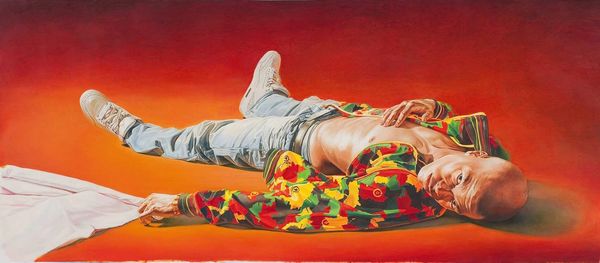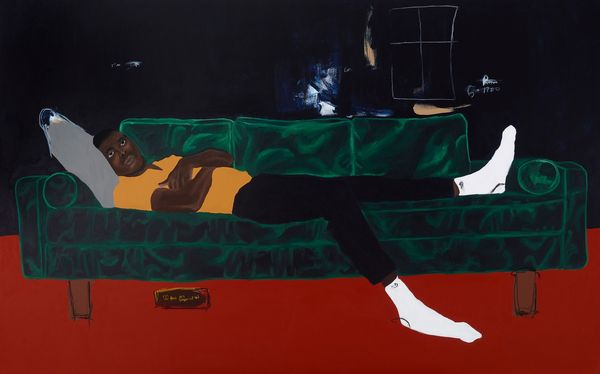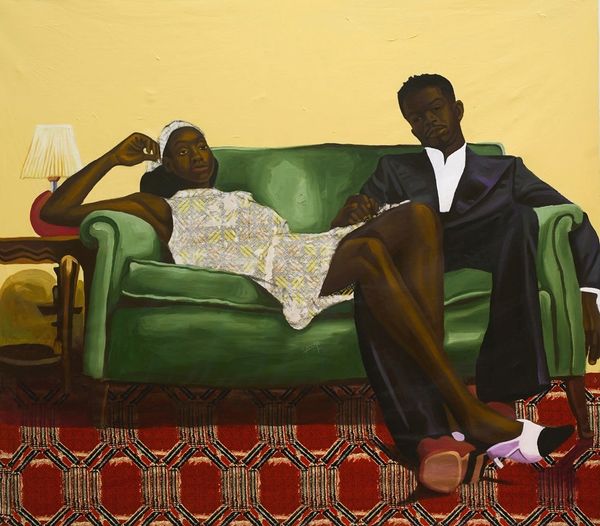
#
pattern-and-decoration
#
figurative
#
festivity
#
animal print
#
folk art
#
floral element
#
facial painting
#
naive art
#
pop art-influence
#
floral
#
impressionist inspired
#
chaotic composition
Copyright: Modern Artists: Artvee
Curator: Kehinde Wiley's "Morpheus" from 2008 presents a striking figure amidst a decorative field of flowers. What catches your eye immediately about this composition? Editor: The opulence. It feels deliberately staged, like a modern-day reimagining of a classical odalisque, yet grounded by the contemporary clothing. There's a fascinating tension. Curator: Wiley is known for placing Black figures in the traditionally white, aristocratic contexts of classical portraiture. He's referencing historical power dynamics and inserting a contemporary narrative. Editor: Exactly. And the choice of floral patterns—folk art with pop art influence– seems almost strategic. Are they meant to evoke themes of growth, fragility, or even…oppression, given the subject's position? It raises questions of visibility and agency. Curator: Absolutely. Consider the symbolic weight of flowers throughout art history. Here, against the backdrop's impressionist-inspired floral, our central figure reclines with apparent languor, recalling not only the dreaming Greek god of sleep Morpheus, but potent symbols like sleep, dreams, but also inertia or escapism. Editor: His gaze is intriguing—a touch weary but direct, meeting the viewer’s. There’s a confrontation there, wouldn’t you agree? As though daring us to unpack our own assumptions about him. And how do tattoos function within this setting—adding more complexity about who he is. Curator: Tattoos are a deeply resonant personal mark, layered with associations to class and belonging. Here, there is a celebration, as it makes a bold cultural and counter-cultural statement by claiming space within art history’s grand tradition. This speaks to broader struggles of cultural memory. Editor: I leave pondering its commentary on power, visibility, and who gets to occupy these spaces, both literally and historically. It’s powerful! Curator: It really makes us reconsider not just art, but our understanding of ourselves in art.
Comments
No comments
Be the first to comment and join the conversation on the ultimate creative platform.
